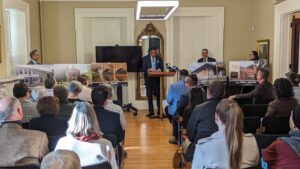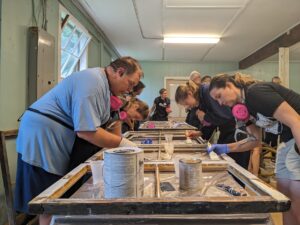
"Preservation by relocation" or "harvesting?"
- October 22, 2008
- 6:52 pm
- October 22, 2008
- 6:52 pm
Our November newsletter arrived on my desk this morning, and should be in your mailboxes soon (not a member? Join here!). In the newsletter is an article I wrote about historic religious buildings in urban areas, focusing on the challenges they face as demographics shift, some of the innovative ways former religious buildings have been reused, and resources that can help congregations maintain their historic religious buildings.
A recent article in the Buffalo News presents an unusual approach to the problem: a congregation in Georgia wishes to purchase and dismantle a vacant Buffalo church, move it to Georgia, and reassemble it there as their new house of worship. Is this historic preservation? Normally a moved building is considered to have lost a significant component of its historic integrity, because it is no longer in its original setting. However, there are cases where moving a building is the only way to save it – if demolition is imminent, for example. In the case of this former church in Buffalo, there seems to be some disagreement as to whether the building might have the potential for reuse if it remains in its original location. Buffalo has a surplus of empty religious buildings, due to a large number of church closures, and while there have been notable reuses, many are sitting empty.
What would you think if a vacant building in your community was moved somewhere else – is it a great save, or a community loss? Would you rather see it mothballed in place in the hope that the future might bring new uses (much as there is now a strong demand in many cities for long-vacant industrial space for loft apartments), or know that another owner is taking care of it elsewhere?
Posted by Katie Eggers Comeau, Advocacy Coordinator
SHARE




